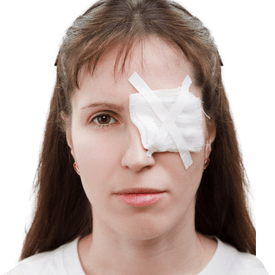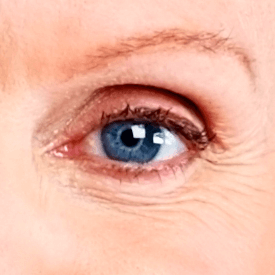
Electrophysiological (EP) testing of the retina/macula is a noninvasive diagnostic technique that measures the electrical activity of the eye.

Quantitative autofluorescence imaging is a technique to determine the interaction between the nourishing cells and the visual cells of the retina.

A dye is injected into a patient’s bloodstream during fluorescein angiography, illuminating vessels in the back of the eye to highlight any problems.

Dr. Kaushal uses fundus photography to attain clear, detailed images of the retina so that a quick diagnosis can be made and prompt treatment given.

Nutritional biochemistry is research and science that links certain retinal conditions to the nutrition, diet, and health of an individual.

Scleral buckle surgery is used to repair breaks or holes in the retina and retinal detachment, by reattaching the sclera and flattening the retina.

A vitrectomy is a retinal treatment that removes the eye’s vitreous gel to repair a retinal detachment, and to remove scar tissue and other particles.

Pneumatic retinopexy is a nonincisional medical procedure that utilizes innovative techniques to repair a retinal detachment or horseshoe tear.

Ocular toxoplasmosis is a disease caused by a retinal infection that can lead to significant inflammation or scarring, and ultimately impaired vision.

Ocular trauma results when the eye has been injured from a traumatic event such as a blunt force or sharp object harming the retina or cornea.

A hereditary dystrophy of the retina and macula can manifest itself in a number of different ways and affect different aspects of a person’s vision.

Comprehensive Retina Consultants is skilled in the surgical treatment of blurred and/or distorted vision that results from an epiretinal membrane.

At Comprehensive Retina Consultants, Dr. Shalesh Kaushal is equipped to diagnose and treat cystoid macular edema, yielding positive results.

A macular pucker is when scar tissue forms on the surface of the retina, causing blurry and sometimes distorted vision as a result.

When the macula in the retina becomes torn, it can lead to vision loss and what is referred to as a macular hole — a serious condition.

A retinal detachment occurs when the retina, the light-sensitive layer of tissue, becomes detached from its position due to a number of reasons.

A vitreous hemorrhage is a condition where a nearby blood vessel has leaked into the clear vitreous humor gel that separates the retina and eye lens.

Retinitis pigmentosa is an umbrella of rare and inherited conditions, which usually begin in adolescence and lead to a gradual decline in vision loss.

When the small veins leading to the retina harden or get blocked, a condition known as retinal vein occlusion can occur causing vision loss.

A retinal tear can occur when the vitreous gel detaches from the retina, which can result in blurry vision and in some cases, severe vision loss.

PVD is a condition that occurs among the elderly that can lead to blurry vision, floaters, and flashes of light. Often treated with a vitrectomy.

Optic neuritis is the medical term for inflammation of the optic nerve, the area of the eye that transmits visual data from the eye to the brain.

Ischemic optic neuropathy is often referred to as a stroke of the optic nerve, which can lead to significant vision loss and in some cases, blindness.

Intraocular tumors are abnormalities found inside the eye that develop when cell growth and death become unbalanced. They can be malignant or benign.

Diabetic retinopathy causes damage to the blood vessels in the retina in diabetic patients, and if not controlled, can lead to serious vision loss.

Macular degeneration is a retinal disease that can cause central vision loss. Dr. Kaushal is a known authority on AMD and offers advanced diagnostics.










